How to style your living area
The Living Room is usually the largest space of your home, and for many, likely to cause the biggest headache. Let's face it, the options are endless and coupled with the requirement to think functionally can leave you making costly decisions under pressure.
In our studio’s approach to decorating living spaces, there is a method to the madness to create a space that inspires, serves your family’s daily needs and appears considered and thoughtfully put together.
Often the living room is what sets the tone and mood of your home. So take your time to find your style, plan your pieces, colour and placement, and then bring it all together. It may seem like a lot of work at first, but this is your space and you want it to reflect you. As you start to plan and gather your inspiration, you’ll find you start to enjoy the process and have fun along the way.
Be sure to keep an eye on our Facebook page for more styling tips and inspiration for your new home.
1. Layout
Understand your floor plan: Take note of openings (windows and doors), possible busy spots and views from larger furniture pieces (e.g. sofa, occasional chair). The sofa placement will be dependent on the larger view of the room (windows to the outdoors, fireplace, and or TV position) whereas smaller pieces are occasional and require less consideration as they take up the least amount of space.
Space considerations: Consider people in the space. Family and friends have different personal space requirements; a cosy sofa arrangement may work well for movie nights with loved ones whereas less frequent visitors may prefer the option of sitting on an occasional chair in the same space. Understanding your lifestyle and how you entertain will assist you with regard to the size and type of furniture pieces you purchase.
Separation: If you have an open plan dining/living room, you may wish to consider how you achieve ‘visual separation' of the two spaces. A great way to do this is by purposeful placement of the dining table relative to the position of the sofa and area rug in the living space. Remember that you will need to allow adequate walkway between dining chairs (including pull out of chairs) and kitchen bench versus living room furniture.
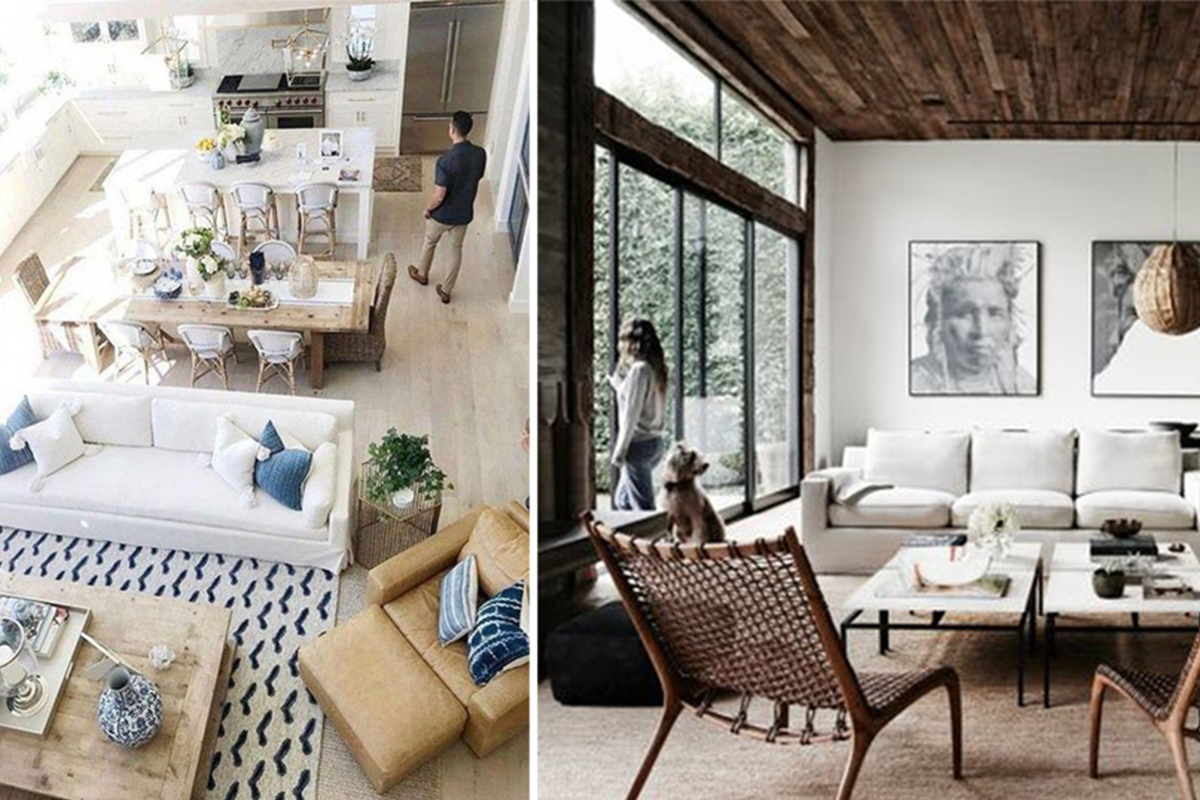
Left Image: Allow for walkways and thoroughfares through your living space.
Right Image: Place furniture with consideration to window views and openings.Create conversational clusters - family vs guest seating.
2. The Sofa
The sofa will most likely be one of your biggest investments and as such requires a thoughtful approach.
Style: We have discussed styles in our previous blog. If you are unsure or in doubt, my recommendation is to work with a style of sofa that is neutral in the space. Think timeless but something which will also provide you the best option functionally. Remember the sofa is a ‘hero’ in your living space, and therefore you need to consider size, colour and design carefully.
Additional furniture pieces: Identify all other pieces you wish to add to the room along with your sofa. Make an extensive list, don’t worry at this poin about the style of these pieces, this will be revealed once you have selected your sofa and made decisions on the overall look and feel.
Identify sofa size: Start by identifying your seating requirements. Size the selected sofa in your space (with masking tape) or on the floor plan (note - you will need to work with room proportions, an easy way to do this is to use grid paper to mark out your floor plan, 1 square = 1 metre). Review your floor plan with the sofa sized into the space, consider clearance/walkways around the sofa and allow for other pieces (coffee table, arm chairs, side table) to ensure you have adequate flow between furniture items.
Choose your style: Once you have a clear idea of size allowances and all that you wish to position in the space, select the ‘style’ of sofa. The classic decorator will be working with pieces with lavish curves, rolled arms, mid to high backs and related classic design detail. Others will be working with styles of timeless or contemporary features, low profile, chunky, boxed sofas, with simple or minimal design detail, mid-low back and neutral in colour.
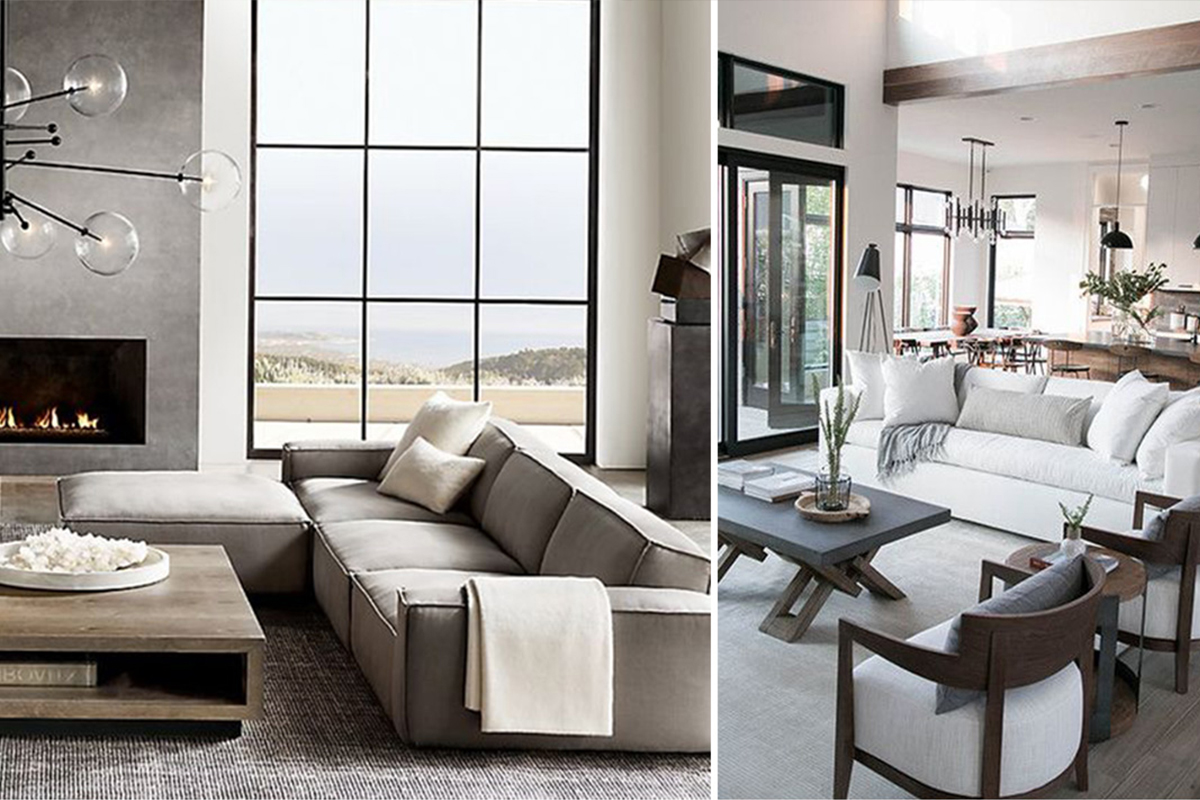
Image left: A timeless sofa design will offer flexibility with a range of interior styles. To retain simplicity in the space, consider ottomans as additional seating. Image right: Combine furniture with legs, with furniture that sits closer to the floor (low profile).
3. The Area Rug
One of the biggest and most common decorating mistakes that peoplemake is to choose an area rug that is far too small for the space, and consequently far too small for other pieces in the room.
Size: Proportion is key. Ensure your rug is in proportion with the size of the living space and larger furniture pieces. I will often usean area rug to frame the space particularly in open plan rooms as it’s one of the easiest and quickest ways to separate living zones without the use of fixed furniture pieces or divisional walls and shelving.
Feet: I prefer sofa legs on the rug, even if it is the front only. Ensure the rug can accommodate all seating within the room, unless it is a larger space and allows for one main seating cluster.
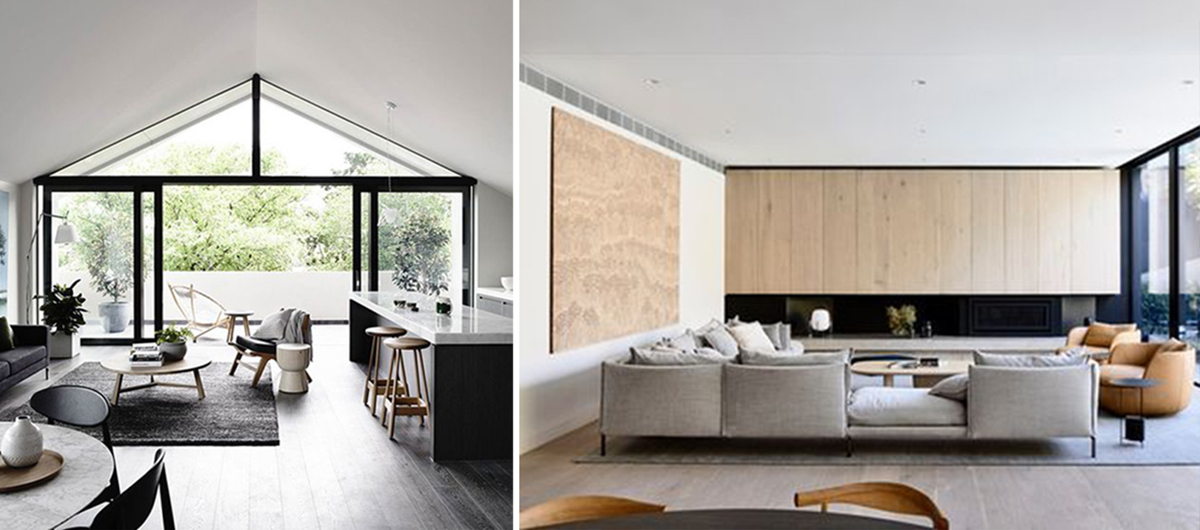
Left Image: In a open plan space, an area rug will provide separation between living zones.
Right Image: Select an area rug that is large enough to position all seating elements.
4. Other Furniture Items.
Personally, I like to select the sofa alongside other furniture pieces. Once I have identified the colour, size and style of sofa, I will work in the other pieces. It is a process of constantly reviewing its practical use with the overall style of your home. But there are a few points to consider here:
Size of pieces combined: It’s important to have established your sofa size. That’s so you can select items keeping within overall dimensions and height. All pieces should be harmonious or within close range of each other.
Combine: I like to combine high profile (off the ground) furniture pieces with floor level (or low profile) and vice versa. That is, a sofa that sits close to the floor paired with an armchair that is off the floor with legs.
The coffee table: I will often specify a natural finish to the table top or entire piece. This adds warmth and interest to the space. In selecting the finish, consider the amount of use this item of furniture gets. Explore surfaces with texture or items that will age graciously over time. Our go-to finishes in the studio are 2-pack, timber, stone, or metal.
Occasional Pieces: Side tables and smaller furniture items are, in my view, transitional objects. That is, they can move in and out of the space and have the potential to offer a level of creativity and practicality (holder of books, coffee cups, wine glasses etc.). Assemble pieces that are interesting whether it is in form or finish, and pair these with your selected larger furniture elements.
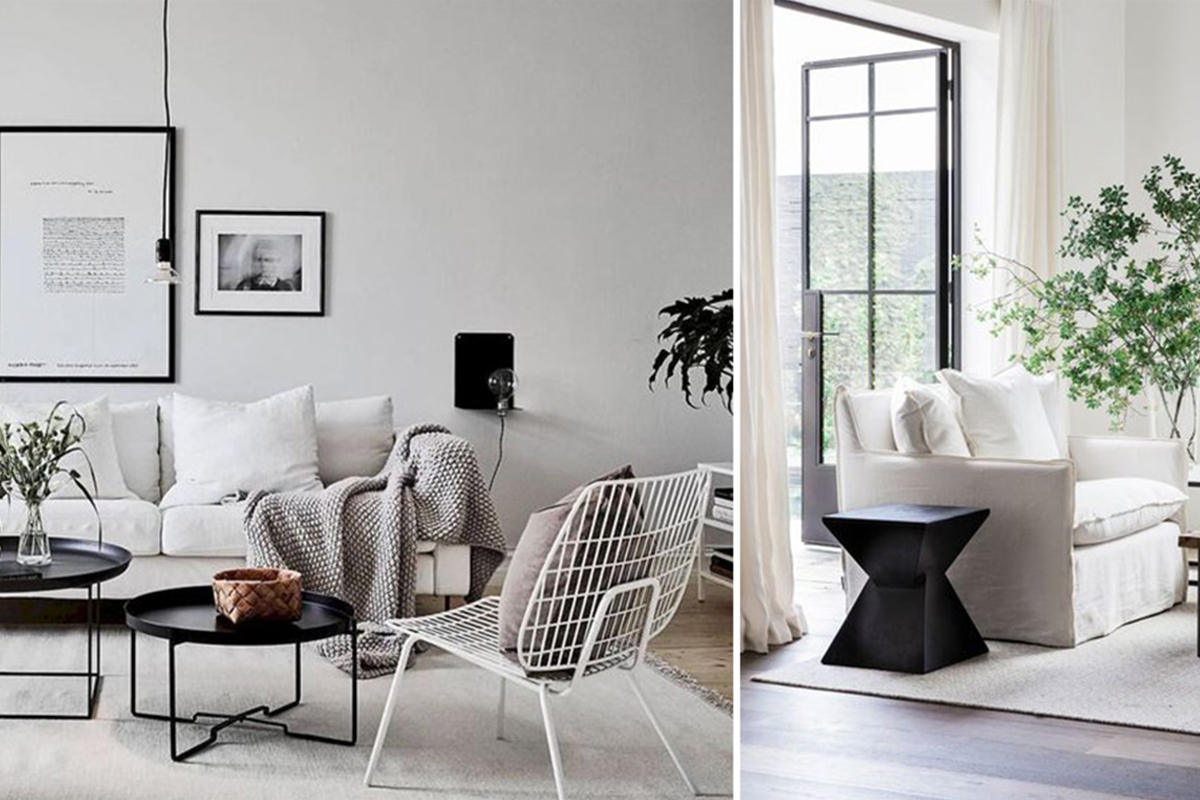
Left Image: Consider the size of all furniture pieces combined.Keep within overall dimensions and heights. Right Image: Natural finishes add warmth and interest to a space.
5. Decor, Styling, Lighting
Clever, creative styling has the potential to elevate a space considerably. It is also where you, as the home owner can show off your own personality in your design choices.
Colour and texture: I like to think about the overall colour once I have established the layout, size, functionality and style of furniture pieces within a space. Once this is set, I bring it together with colour and materials. This is where you can really start to have fun!
Texture: Now this is one of my favourite styling elements. In reviewing the styling aspect of a project, I look at what we have already in finishes within the room, and then build from there. This includes all joinery, floor surfaces and wall finishes (specialist paint, cladding, tile, render etc.). An area rug has the potential to cover a large surface area and as such can provide a considerable degree of texture (dependent on style) into your space. I like to incorporate (in varying degrees) interesting finishes to spaces to form part of my styling artillery. This is through a selection of pieces such as hand finished pieces, ceramics, sculpture, leather, woven textures and stone.
Collect and display: Collect at markets, buy at student art fairs, think outside retail and you will be surprised at what you can find. It’s the collected pieces that add character to a room. This may only be one element - for example, an African statue can add an interesting statement paired with other simple objects. Spend time placing and reviewing, move product in and out of the space, and on and off surfaces until you feel you have achieved your desired result.
Size: An abundance of small objects, decor or art can make a space appear cluttered. Confidently use those larger pieces such as large artworks as they have the potential to create dimension and elevate a space (create perception of height). Larger decor elements nested with tiered sizes provide an interesting cluster effect and span more surface area. In other words, less becomes more.
Lighting: Use floor or table lamps to add ambient, mood lighting. Both can work well within the one living space as long as the style and scale complement each other.
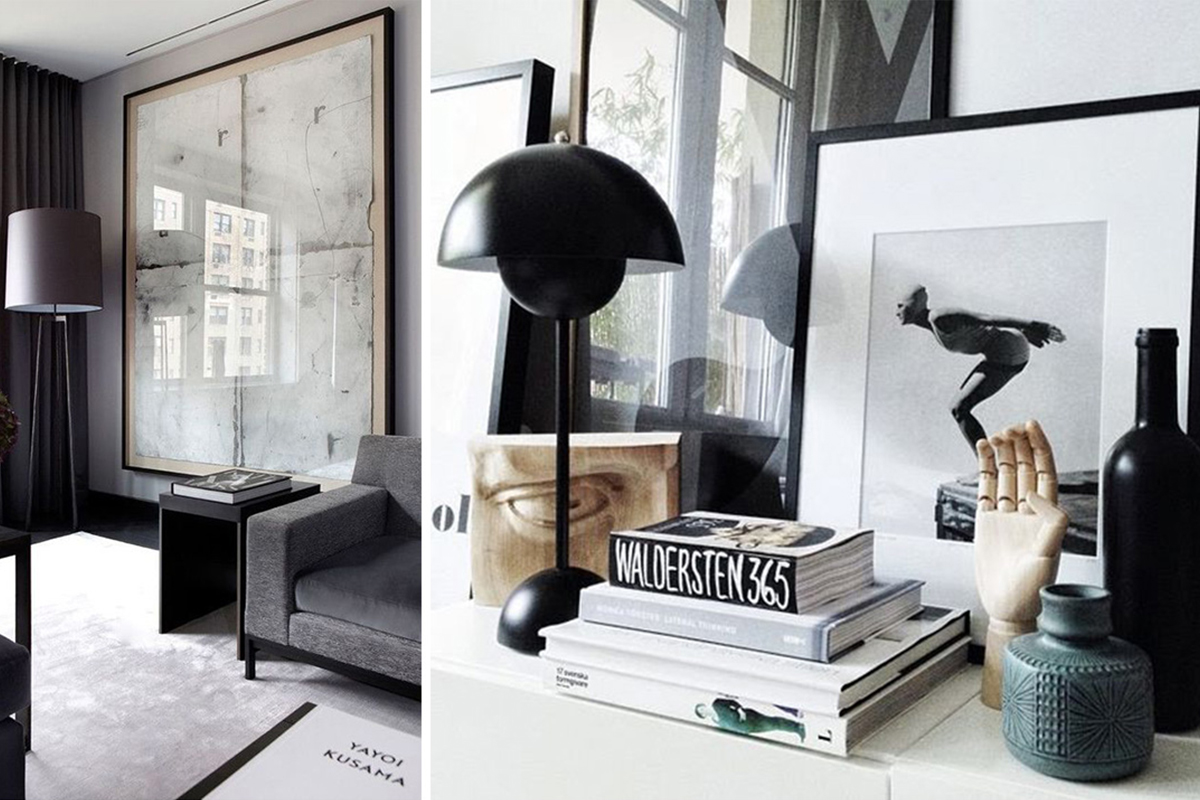
Left Image: Explore the use of large artworks and/or decor within your space.
Right Image: Incorporate collected pieces to add character to your space.
Often the living room is what sets the tone and mood of your home. So take your time to find your style, plan your pieces, colour and placement, and then bring it all together. It may seem like a lot of work at first, but this is your space and you want it to reflect you. As you start to plan and gather your inspiration, you’ll find you start to enjoy the process and have fun along the way.
Be sure to keep an eye on our Facebook page for more styling tips and inspiration for your new home.
By Kirstin Bailey. Creative Director, Bailey Studio.

